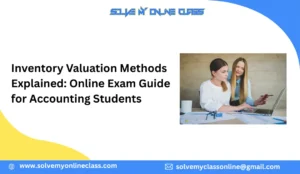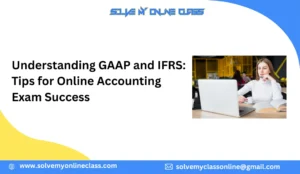Variance analysis is one of the most tested topics in management and cost accounting. For students preparing for online exams, mastering this skill is essential not only for passing but also for demonstrating analytical ability that employers value. Whether you’re sitting for a Master’s level test or a professional certification, variance analysis questions can be tricky because they require both calculation and interpretation.
This blog will explain variance analysis, share practical exam strategies, highlight common mistakes, and show how to balance independent study with online exam help when needed.
Understanding Variance Analysis
Variance analysis compares actual results with budgeted or standard costs to identify differences. These differences—called variances—can be favourable (better than expected) or unfavourable (worse than expected).
Key categories include:
- Material variances: Price variance, usage variance
- Labour variances: Rate variance, efficiency variance
- Overhead variances: Spending variance, volume variance
- Sales variances: Price variance, volume variance
The exam challenge lies not only in calculating these figures but in explaining why they occurred. For example, a material price variance might be due to supplier changes, while a labour efficiency variance could reflect training issues.
Why It Matters in Exams
Variance analysis is a favourite among examiners because it tests multiple skills:
- Numerical accuracy: Can you apply formulas correctly?
- Interpretation: Do you understand the business implications?
- Decision-making: Can you suggest corrective actions?
Students often think, “If only someone could take my accounting exam for me, I’d be fine.” But variance analysis is a skill worth mastering yourself—it’s directly relevant to professional practice.
Step-by-Step Approach
- Memorise formulas with logic: Don’t just rote-learn. Understand why each formula works.
- Set up clearly: Write down the standard cost, the actual cost, and the difference.
- Label correctly: Always mark variances as favourable (F) or unfavourable (U).
- Interpret results: Link numbers to causes—market conditions, efficiency, or management decisions.
- Practice past papers: Online exam platforms often recycle question styles.
Online Exam Tips
1. Manage Time
Variance analysis questions can be calculation-heavy. Allocate time wisely:
- 40% for calculations
- 60% for interpretation
2. Present Clearly
Use tables or structured layouts. Examiners appreciate clarity.
3. Double-Check Signs
Mislabelled favourable/unfavourable results are a common error.
4. Link to Context
Don’t just say “variance is unfavourable.” Explain why—e.g., higher material costs due to inflation.
5. Simulate Conditions
Practice under timed online exam conditions to reduce stress.
Mistakes to Avoid
- Only calculating: Numbers without interpretation won’t earn full marks.
- Ignoring ethics: Some exams test the ethical implications of cost control.
- Over-reliance on calculators: Always show workings.
- Thinking shortcuts will save you: Searching Do my accounting exam won’t build long-term skills.
Example Question
Question: A company budgeted 1,000 units at £5 per unit. Actual production was 1,200 units at £6 per unit. Calculate material price and usage variances.
Solution:
- Standard cost = 1,000 × £5 = £5,000
- Actual cost = 1,200 × £6 = £7,200
- Material price variance = (5 – 6) × 1,200 = –£1,200 (Unfavourable)
- Material usage variance = (1,000 – 1,200) × 5 = –£1,000 (Unfavourable)
Interpretation: Costs rose due to higher prices and excess usage.
When to Seek Support
Even diligent students sometimes struggle. If you’re overwhelmed, you might think, “Should I just pay someone to take my accounting exam?” While that’s a tempting shortcut, it’s risky and often against academic integrity policies.
A smarter option is to seek online exam help from tutors or mentors. They can:
- Review your practice answers
- Explain tricky variance concepts
- Provide mock exam simulations
This way, you get guidance without compromising ethics.
Balancing Independence and Guidance
Some students consider whether to hire someone to take my accounting exam. While services exist, the better approach is to use them for coaching rather than outsourcing. Think of it as mentorship: experts help you refine your skills, but you remain in control of your learning.
Remember, exams are designed to test your understanding. Using support responsibly—like practice sessions or feedback—can boost confidence without crossing ethical lines.
Checklist for Success
Before your exam, ask yourself:
- Do I know the formulas for material, labour, overhead, and sales variances?
- Can I explain favourable vs. unfavourable results?
- Have I practised under timed conditions?
- Can I link variances to real-world causes?
- Do I have a clear time management plan?
If you can tick these boxes, you’re ready.
Conclusion:
Variance analysis is more than a calculation—it’s a test of your ability to connect accounting numbers with business realities. For students preparing for online exams, mastering this topic is essential.
If you feel stuck, remember that support is available. Whether you’re searching for online exam help, wondering Can someone do my accounting exam for me?, or considering whether to hire someone to take my accounting exam, the key is to use guidance responsibly.
Your goal should be not just to pass but to demonstrate the analytical skills that will serve you throughout your career. Treat variance analysis as a foundation, and you’ll build confidence that extends far beyond the exam hall.






